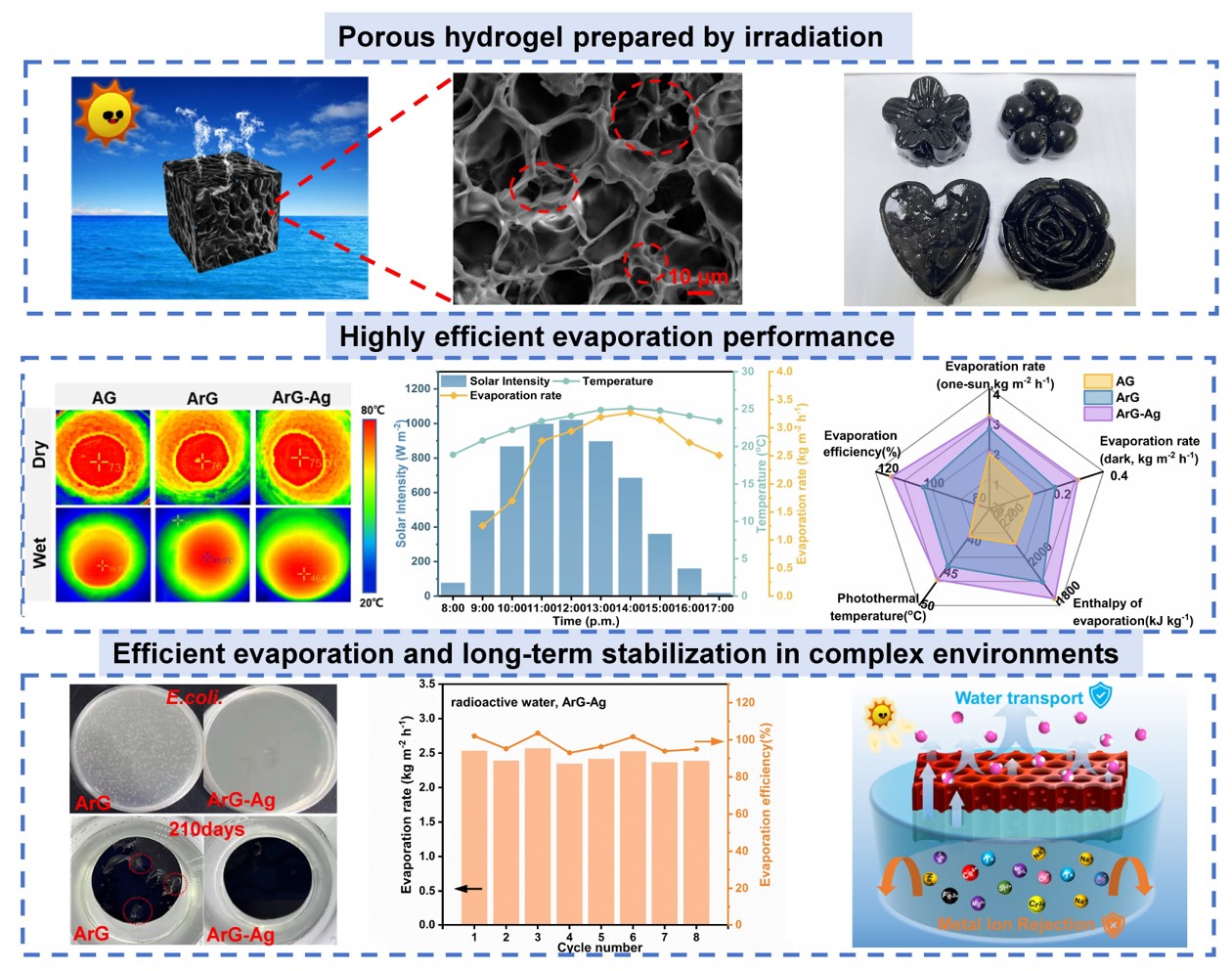






Recently, the Radiation Chemistry and Applications Group of Shanghai Institute of Applied Physics, Chinese Academy of Sciences (SINAP) has made significant progress in the preparation of multifunctional hydrogels for solar-driven desalination and radioactive wastewater purification by using high-energy γ-ray irradiation technology, and their article "Multifunctional graphene/Ag hydrogel with antimicrobial and catalytic properties for efficient Solar-driven desalination and wastewater purification" has been published in Chemical Engineering Journal, a top international journal of chemical engineering. Miss Lin Lin, PhD candidate at Shanghai Institute of Applied Physics, Chinese Academy of Sciences, is the first author. Assoc. Prof. Jihao Li and Prof. Linfan Li at Shanghai Advanced Research Institute, Chinese Academy of Sciences, are the corresponding authors.
The development of efficient photothermal desalination and wastewater purification devices is of great significance in addressing freshwater shortage. To obtain high evaporation efficiency, efforts have been made to study new photothermal materials and to optimize the structure and performance of evaporators. Oil pollution, organic dyes, heavy metal pollution, harmful radioactive pollution, and microorganisms in seawater will have a considerable impact on the evaporation performance and lifetime of the evaporator. Therefore, how to maintain the efficient evaporation and long-term stability of the evaporator in complex environments is still a difficult problem.
In this work, multifunctional polyacrylamide-based reduced graphene oxide (rGO) /silver composite hydrogel materials with a combination of highly efficient photo-thermal evaporation performance, salt resistance, antimicrobial, antifouling, and catalytic properties were synthesized in situ by a one-step radiation polymerization and reduced self-assembly method through the structural and functional design of the materials. In this multifunctional hydrogel, it was found that the hydrophilic polyacrylamide crosslinked network provided excellent water transport channels, rGO enhanced its structural strength and silver nanoparticles conferred excellent bio-contamination resistance to the hydrogel, while the composite synergistic effect with graphene further strengthened the photo-thermal conversion performance of the hydrogel. The evaporation rate achieved 3.089 kg m-2 h-1 (one sun) with an evaporation efficiency of 122.7% and good mechanical stability, salt resistance, and salt-ion purification. The evaporator showed 99% inhibition of E. coli for 24 hours and 210 days of long-term mold resistance against biological contamination of seawater. Notably, the evaporator maintained excellent evaporation rates in oil-containing, surfactant-containing, and simulated radioactive-element-containing wastewater, and the radioactive elements in the evaporated condensate were greatly reduced, achieving the goal of wastewater purification. This work provides a new strategy for synthesizing and designing a multifunctional evaporator that combines efficient evaporation performance, salt resistance, antimicrobial, antifouling, and catalytic properties.
Link: https://doi.org/10.1016/j.cej.2023.147249
